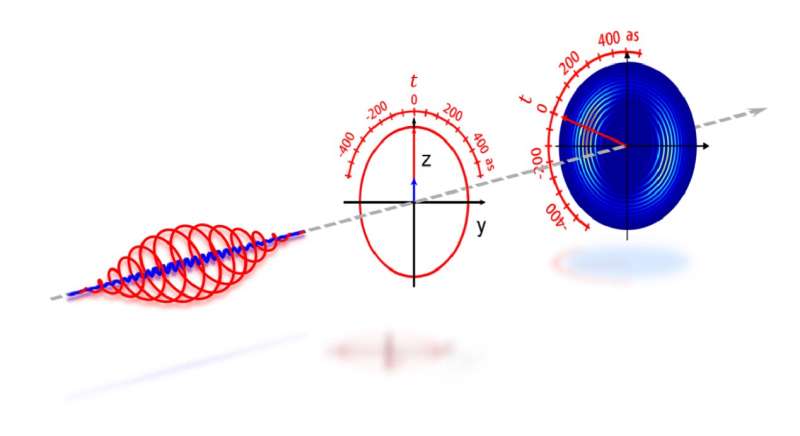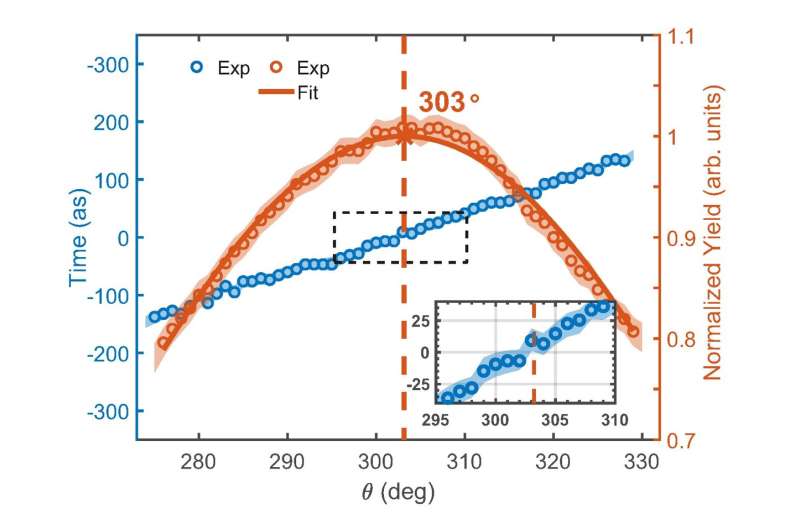Full experimental determination of tunneling time with attosecond-scale streaking method

The question of how long a particle takes to tunnel through a potential barrier has sparked a long-standing debate since the early days of quantum mechanics. To solve this problem, scientists in China have proposed and demonstrated a novel attosecond-scale streaking method to accurately determine the tunneling time of an electron from an atom. The experimental results have shown that the tunneling time is close to zero with a precision of a few attoseconds.
Timing photoionization is essential for our understanding of how light and matter interact on the most fundamental level. The advent of attosecond metrologies allows us to access the timing information on the natural scale of electrons in atoms and molecules. The attoclock is a powerful tool that can access a short time scale and in which a nearly circularly polarized laser field is used to map the tunneling time of an electron to the offset angle of the photoelectron momentum spectrum in the laser polarization plane.
However, the accurate reconstruction of the ionization time from the offset angle presents a formidable theoretical task, which includes the treatment of the effect of Coulomb potential and multielectron correlation. Thus, the experimental conclusion of the tunneling time problem depends on theoretical modeling of the Coulomb interaction. So far, the question of whether the tunneling time is finite or not is still under debate.
In a new paper published in Light: Science & Applications, a team of scientists, led by Professor Min Li, Professor Yueming Zhou, and Professor Peixiang Lu from Wuhan National Laboratory for Optoelectronics and School of physics, Huazhong University of Science and Technology, China, has proposed and demonstrated a scheme to experimentally determine the tunneling time in an attoclock without any theoretical calculation. In this scheme, a perturbative second-harmonic field was added to the fundamental driving field. By analyzing the relative phase dependence of the photoelectron yield in the PMDs, the tunneling time was precisely measured.

The team applied the scheme to study the strong field tunneling ionization time of argon atom, and determined that the tunneling time is close to zero with a precision of a few attoseconds.
Using the present scheme, the team further retrieved the ionization time of electrons with different energies. They found that the extracted tunneling ionization time from the measurement at the most probable emission angle decreases with increasing electron energy, which contradicts the prediction of the classical trajectory model. This remains an interesting topic for further investigation.
The scheme is self-referencing and independent on theoretical modeling of the Coulomb effect. Extending this method to molecules and even solids can provide us not only the fundamental dynamics of laser-matter interaction but also the potential of retrieval of geometrical information of the targets.
More information: Miao Yu et al, Full experimental determination of tunneling time with attosecond-scale streaking method, Light: Science & Applications (2022). DOI: 10.1038/s41377-022-00911-8
Journal information: Light: Science & Applications
Provided by Chinese Academy of Sciences




















